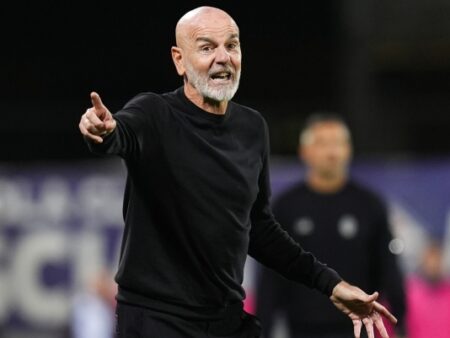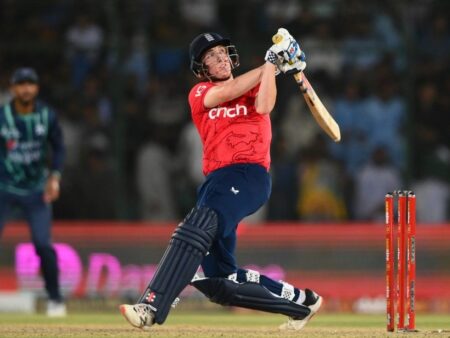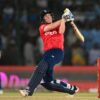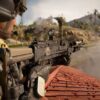OG became the first team to be eliminated from the group stage of PGL Wallachia Season 3 in Dota 2. While expectations weren’t high for this revamped roster, their swift departure without winning a single series is still quite surprising. This is especially true considering the opponents faced by Sebastien “Ceb” Debs’ squad in the final rounds. Let’s delve into just how dire the situation is for the current OG lineup.
OG’s issues predate this tournament. They are currently on an eight-series losing streak. Ideally, the vast experience within OG should have been an advantage at this LAN event, particularly against weaker teams. However, PGL Wallachia Season 3 emphatically demonstrated OG’s current inability to compete effectively.
Their opening match at the tournament was disheartening, but their opponent was Team Spirit, a championship favorite. Yaroslav “Miposhka” Naidenov’s team comfortably defeated all group stage opponents 2-0, making extensive analysis of this series less crucial. Notably, OG only managed a combined ten kills across the two maps.
Dwelling on the loss to Spirit is unnecessary, as the real test for OG was expected to begin against more evenly matched opponents. In the second round, they faced Wildcard Gaming and suffered a complete rout in the first game. Why? Possibly due to OG’s lack of preparation against a lesser-known team. However, the Dota 2 community is well aware of Wildcard’s signature Venomancer pick, with which they are nearly unbeatable (and conversely, struggle without).
Even if Venomancer strategies were outdated or from a previous patch, just the day before their match with OG, the North American team used the hero against a favorite, Aurora, and decisively won. How could this have been overlooked? Is there any valid reason not to ban it? It strongly suggests inadequate preparation.
The problem extends beyond just Venomancer. OG appears lost in drafts overall. They used 33 unique heroes in three series, more than teams who have played four matches. This likely indicates a lack of strategic clarity rather than an abundance of strategies, suggesting confusion about their game plan and preferred heroes.
In the decisive game against Wildcard, OG picked Axe for Ceb. This hero is rarely seen in the professional scene, and for good reason. One weakness is a difficult laning phase and delayed impact on team fights. Ceb did die once in lane but still had good farm. However, his team struggled across the map, unable to receive his help. A telling moment: while net worth was nearly equal, one offlaner was scouting near the enemy’s Tier 2 tower, while the other made a pointless teleport, watching his core heroes get eliminated.
This isn’t solely a criticism of Ceb’s individual play, but of OG’s team coordination and understanding of how to utilize their drafted heroes. This team fight essentially decided the game and the series. Wildcard snowballed their advantage, and OG couldn’t find a response.
The third series against Yellow Submarine was the epitome of OG’s helplessness. Again, the opponent was beatable. Yet, OG not only lost the draft but also proved weaker in macro play against a team with limited top-tier experience. It seems communication within OG during games has broken down. After a minor comeback and stabilization on the first map, the team attempted to push into enemy territory near their own ward – a reasonable idea to catch opponents off guard under their vision. But the execution was flawed. OG couldn’t focus fire effectively, 23savage was late to the fight, and then hesitant to engage, xNova was blocked, preventing spell casts, and Nine’s Ravage was isolated and ineffective.
OG lacks a clear game plan. Victories rely on winning lanes or opponent errors. Poor drafts and inconsistent player form (Daze’s frequent deaths are excessive) hinder the first approach. The second is unreliable, as even Yellow Submarine made numerous mistakes, such as giving up a significant advantage in the decisive third map, which OG failed to capitalize on.
Ceb bears significant responsibility here. While individual performances are generally subpar across the team, Ceb’s issue is more fundamental: he’s out of sync with the game’s rhythm and struggles to create opportunities for his team. He doesn’t have the high net worth of players like ATF or 33, yet plays independently and often cedes initiative, with initiations either too late or too hasty. Symbolically, OG’s tournament ended with such a poorly timed initiation from Ceb.
However, OG’s problems are too extensive to blame a single player. A single roster change or position swap for Ceb won’t fix it. The organization needs a significant overhaul. Otherwise, fans might soon question whether it’s worse to miss events entirely or to qualify and perform this poorly.







